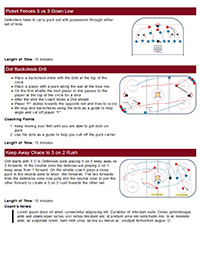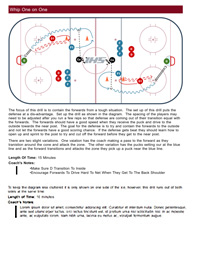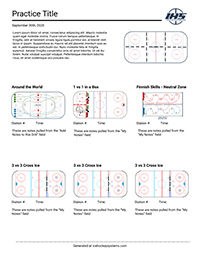2/3/2025 2014's FI
2/3/2025 2014's FI

Gates of Buffalo Small Area Passing Game
The major concept of the Gates of Buffalo Small Area Hockey Game is to practice moving to open space, communicating verbally and non-verbally with teammates, so they can score Goals by passing through Gates.
This game framework will help players learn to play with their head up, communicate with teammates and move to open space.
As a coach, If you commit to working on activities like this instead of memorization drills for a portion of each practice, you will marvel at how your team begins to work together. It will look extremely messy at first, but players will get better with each repetition. Moving to open space, and moving the puck will eventually become second nature to the team.
GAME OBJECTIVE
- Score as many goals as possible by passing through the "Gates."
- You can not pass through the same gate twice in a row!
SETUP & ACTIVITY VARIABLES
- Players: great for 3, 4 or 5 players at a time.
- Time: You can rotate through groups of players in 30, 45 or 60 second shifts and count how many goals are scored.
- Or you can set a number of goals (let's use 5 for example) and stop the watch after 5 goals are completed.
- 5 players can be participating in the activity, while another 5 rest. Blow the whistle and the next 5 jump in. It gets fun when the teams compete against each other!
- Space: can be set up to be within a zone, or half of a zone (station) or a smaller area. The smaller the space, the more challenging it will be for the players as they are forced to make quicker decisions.
- Added Challenge: add obstacles within the space to challenge the players further.
- Tires, cones, sticks, defenceman, etc placed in the space will make it harder to pass and skate around. As time goes on the added obstacles will help improve their reaction & decision making.
- Group Competition: After the group gets comfortable with the exercises, you can add a natural element of competition between the groups by counting the number of successful goals made in the specified amount of time.
- Or you can time each group and see how fast they can complete 5 (or any other number) goals. You will marvel at how the natural element of competition between groups will make the game more intense, competitive and fun!
- With a Goalie: You can require the players to make 2 (or more) passes through a gate before they can shoot on net. After they shoot on net, they need to make the required number of passes through the gates again.
- Pucks: You can add in 2 or more pucks at a time to make players pay more attention to the game and their surroundings.
- Gates: You can add 3 or more gates. They can be made of tires, cones, pucks and other materials. Change up the sizes of the gates for an extra challenge. The smaller the gate, the more challenging the game is!
- 3 vs 3 Game: You can setup gates and make the game 3 v 3, 3 vs 2, or 3 vs 1 so there is another team working to prevent scoring on the gates. Adding additional players for the team to play against will give the game a whole new spin. View a video demo of the 3 vs 3 game setup.
Setup Suggestions for Elite Players
- Make the gates much smaller.
- You can add a hockey stick at the bottom of each gate so players must "sauce" through a gate and over the stick for the point.
- Add various obstacles on the ice such as sticks that players must be aware of and pass around or sauce over.
- For extra fun, add a defenceman. Or play 3 vs 2 or 3 vs 3.
- If you have a goalie, require 2 or more passes through the gates before players are allowed to take a shot on net.
COACHING POINTS
- Encourage players to always move to open space on the ice. Do not allow them to stand still and pass the puck back and forth.
- Encourage players to find "passing lanes" to allow good passes.
- This skill is extremely valuable for youth players to work on. Finding passing lanes when you have the puck and jumping to open space when you don't have the puck so your teammate can pass to you is extremely beneficial during games.
- Encourage verbal communication (calling teammate by name, saying you are open, etc).
- Encourage non-verbal communication (good eye contact, showing a passing target, tapping a stick, etc).
- Allow players to make mistakes. It will take time to get comfortable with these activities. But as time goes on you will see them picking their head up to make a decision, which is the goal of this small area game.
Why do we call this small area game "Gates of Buffalo?" The game has been called "gates" in the world of soccer and we decided to add Buffalo to it for two fun reasons: First, IHS has strong ties to Buffalo, NY. Secondly, the imagery of a Buffalo can help drive home to your youth players why you are practicing this game. If you do not pick your head up and use your teammates while playing the game of hockey, you run the risk of getting trampled by the other team. This can feel like getting run over by a Buffalo (physically or on the scoreboard). This game helps prevent both of those situations by forcing players to keep their head up while communicating and working with teammates to score goals.
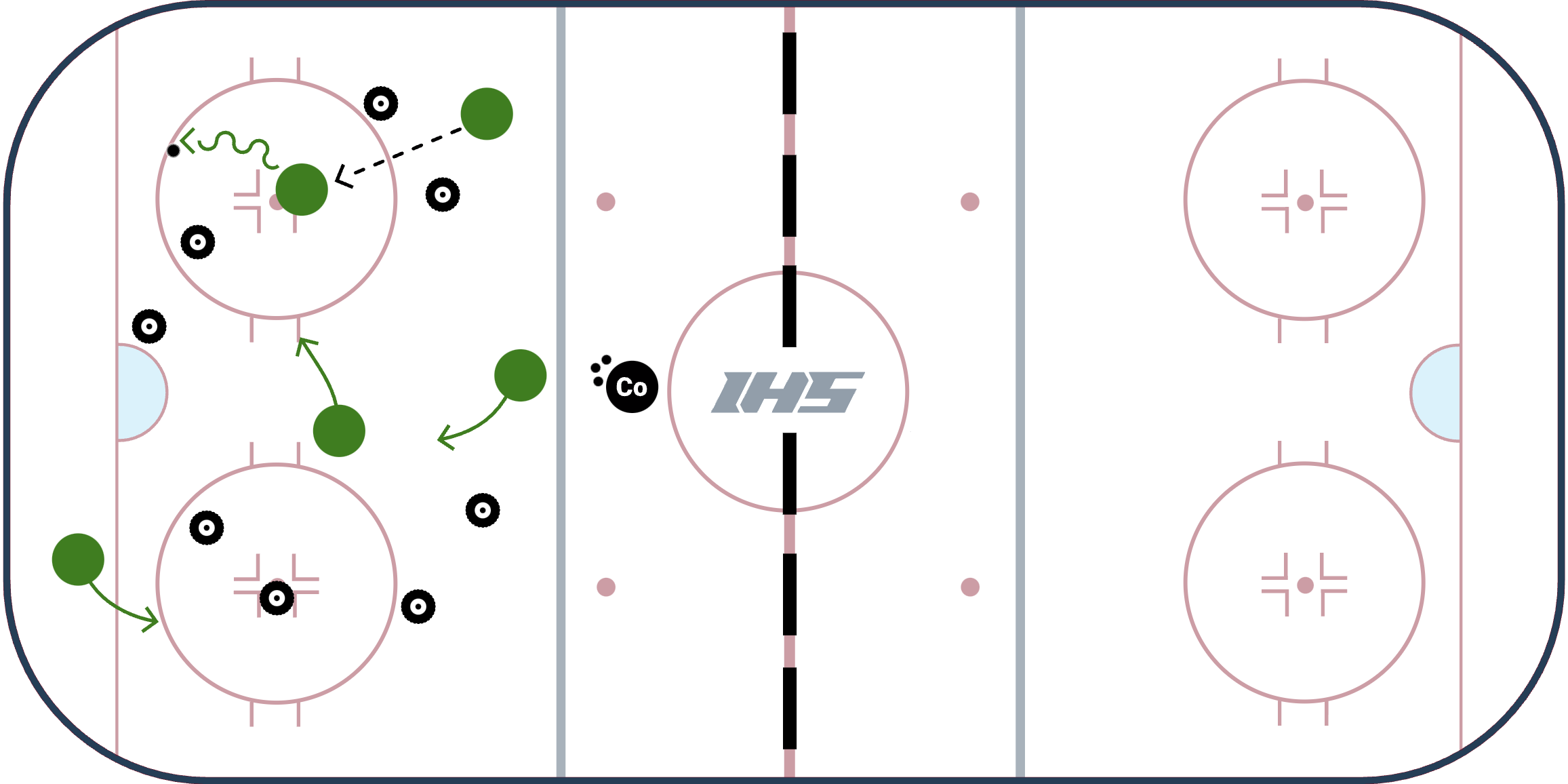
Circle Puck Protect
The Circle Puck Protect Drill from John Dean is a warm-up drill that gets players engaged at the beginning of practice while practicing puck protection & angling concepts.
Setup
- Players in opposite corners of the ice.
- On the first whistle, 2 players from the corner battle for the loose puck inside the face-off circle.
- On the second whistle, the player with the puck, or the player that last touched the puck, takes the puck down the ice, while the player without the puck gets up ice and looks to angle the other puck carrier coming down the ice.
- The forward with the puck can NOT cut to the middle of the ice until they pass the red line.
Coaching Points
- For the 1 v 1 circle battle, compete, get low and work hard to use your body to protect the puck.
- For the 1 v 1 full ice:
- Defender: Try to match their skating speed. Keep stick on the ice and not let the forward cut to the center of the ice. Push them wide with your stick and angle.
- Forward: Keep head up and look to see if there are any opportunities to cut to the middle of the ice. If not, drive wide and to the net.
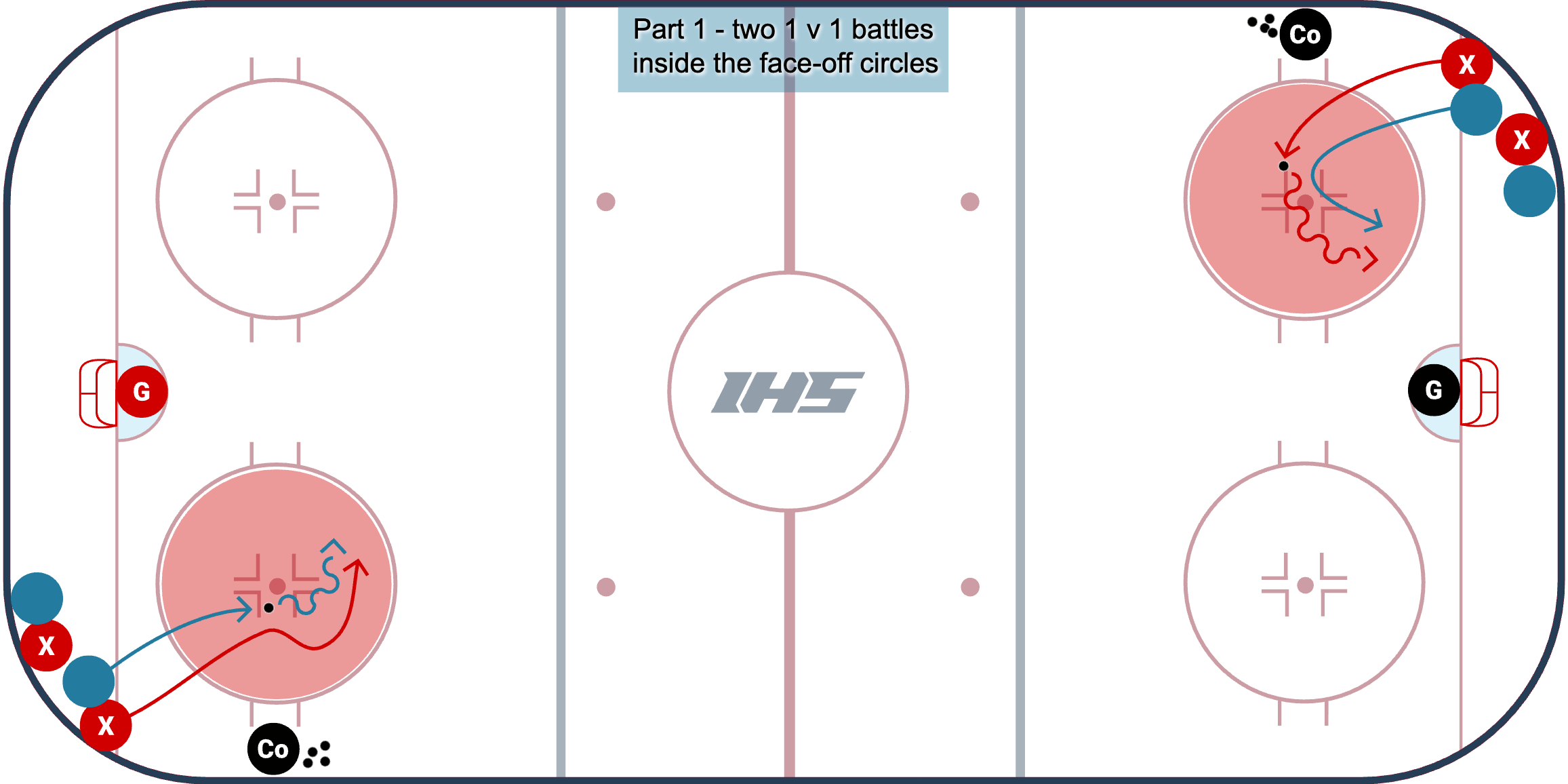
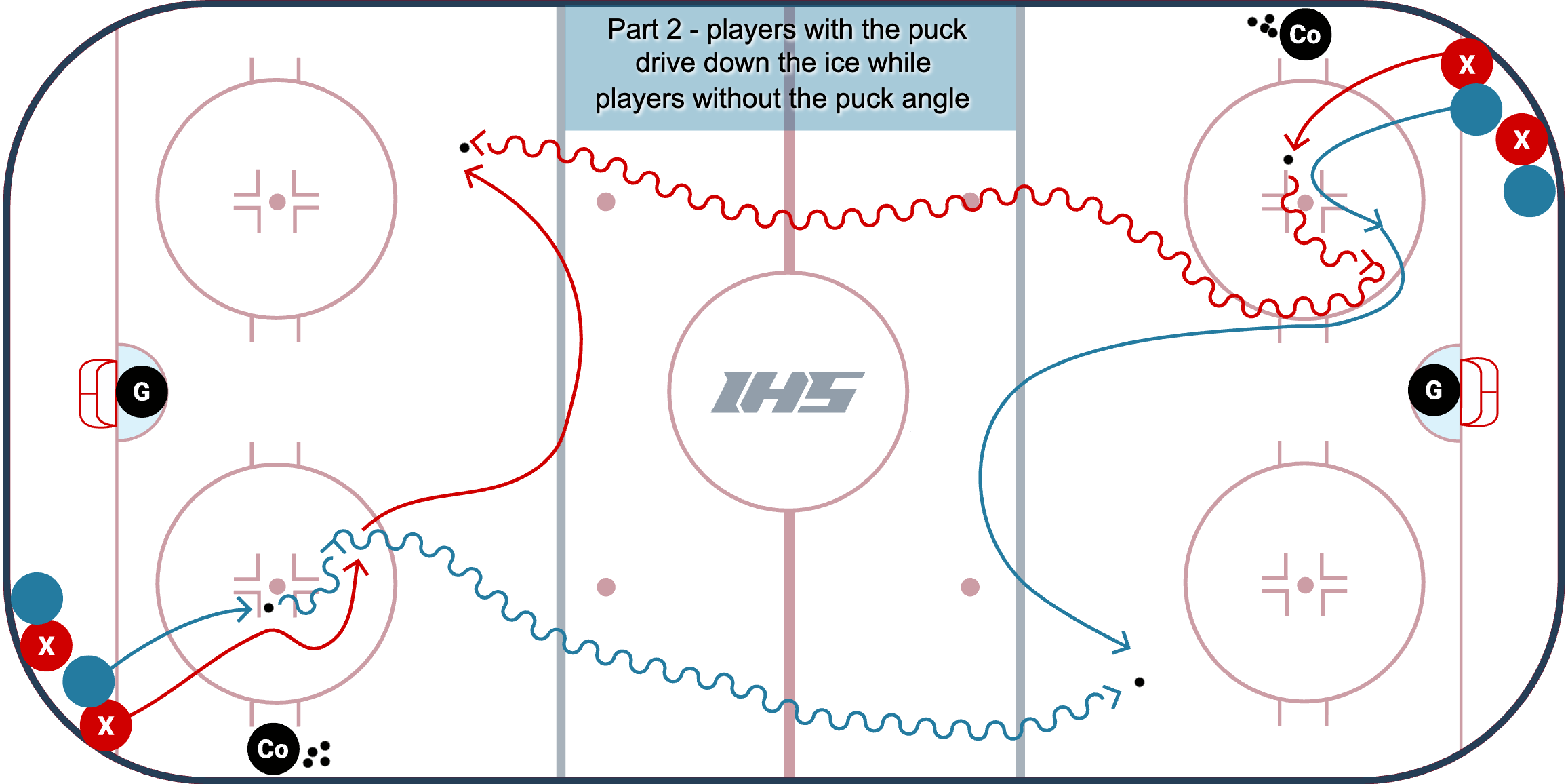
Laker 3 Puck
Player behind net passes pucks to teammates at net front. Defenders must put puck below the goal line or pass to a coach on the dots. On whistle, go to next puck. 3 pucks per rep.
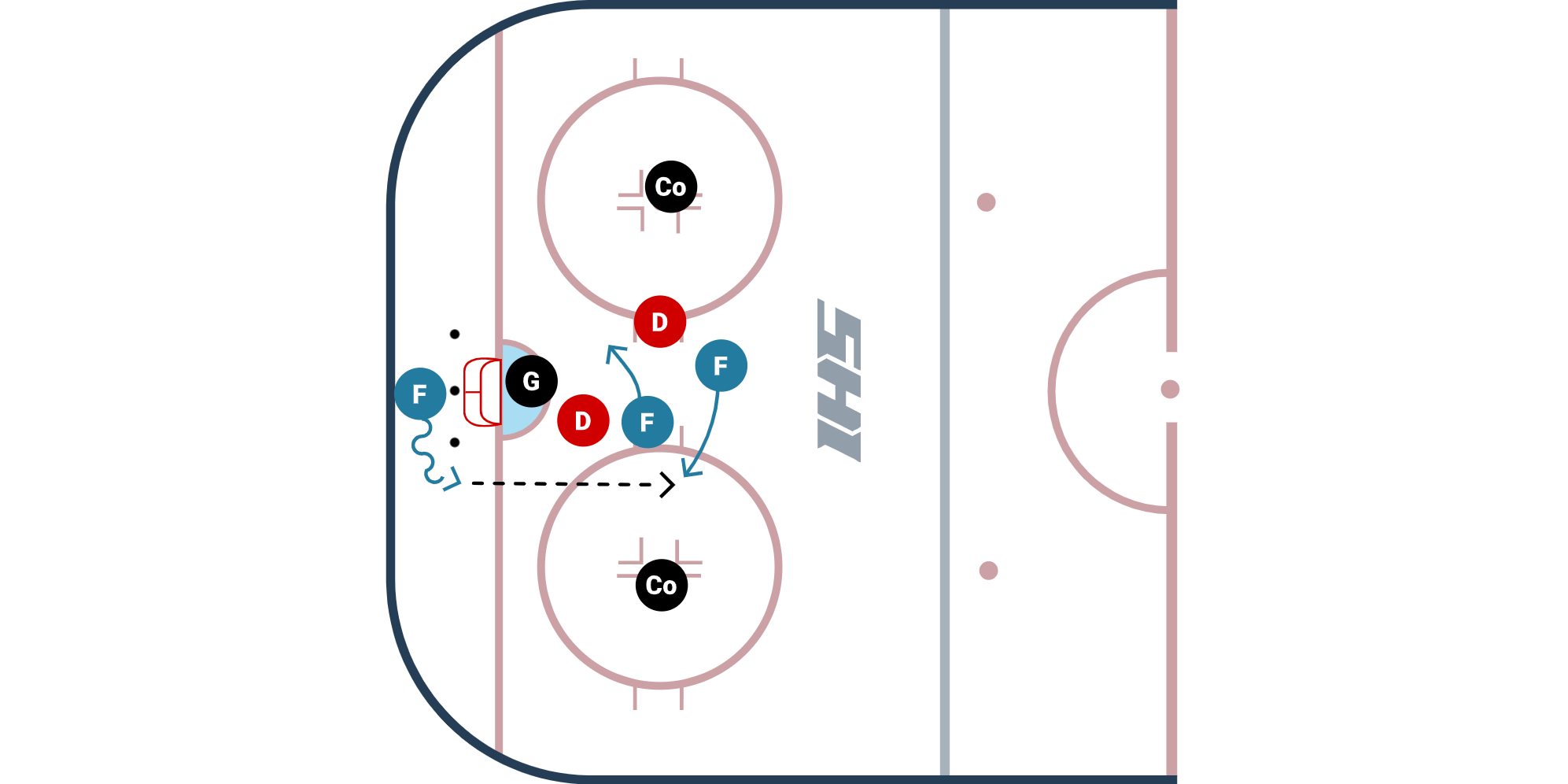
Jets 2 v 2 Drill
The Jets 2 V 2 Drill from TJ Manastersky was shared with the IHS Community while he was an Assistant Coach at Union College. TJ is the Current Head Coach at Brock University in St. Catharines, Ontario.
The Jets 2 V 2 is a rush drill that puts a lot of pressure on the defenseman because they will be trying to gap up properly as they try to handle a lot of speed from the forwards.
Setup
- Start with 2 defenseman at the top of the circles. The rest of the defenseman are along the boards at center ice.
- Forwards are on all 4 blue lines with pucks.
- On the first whistle, the far forwards exchange lanes (and can exchange a puck) before they attack. They must attack from outside of the neutral zone face off dots.
- The defenders jump up the to neutral zone and attempt to gap up properly and handle the excess speed.
- The 2 v 2 plays out until the coach blows a second whistle.
- On the second whistle, the first set of forwards is done, the second set of forwards on the near blue line start and race around the far face-off dots before they begin their attack on the defenders.
- The defenders that just finished the original 2 v 2 race to gap up against the second set of forwards.
Coaching Points
- Defenders need to be aware of the speed from the forwards and need to work to create a proper gap while matching their speed.
- Coaches can have defenders work on their angling skills on the second 2 v 2 rep.
- Forwards should practice fundaments that they would use on a 2 on 2 rush. They might consider driving the net, utilizing cut backs or change of speed to create additional space on the rush.
Connect with TJ by visiting his IHS Contributor Page, where you can subscribe to his newsletter, podcast, and see other drills he has shared.
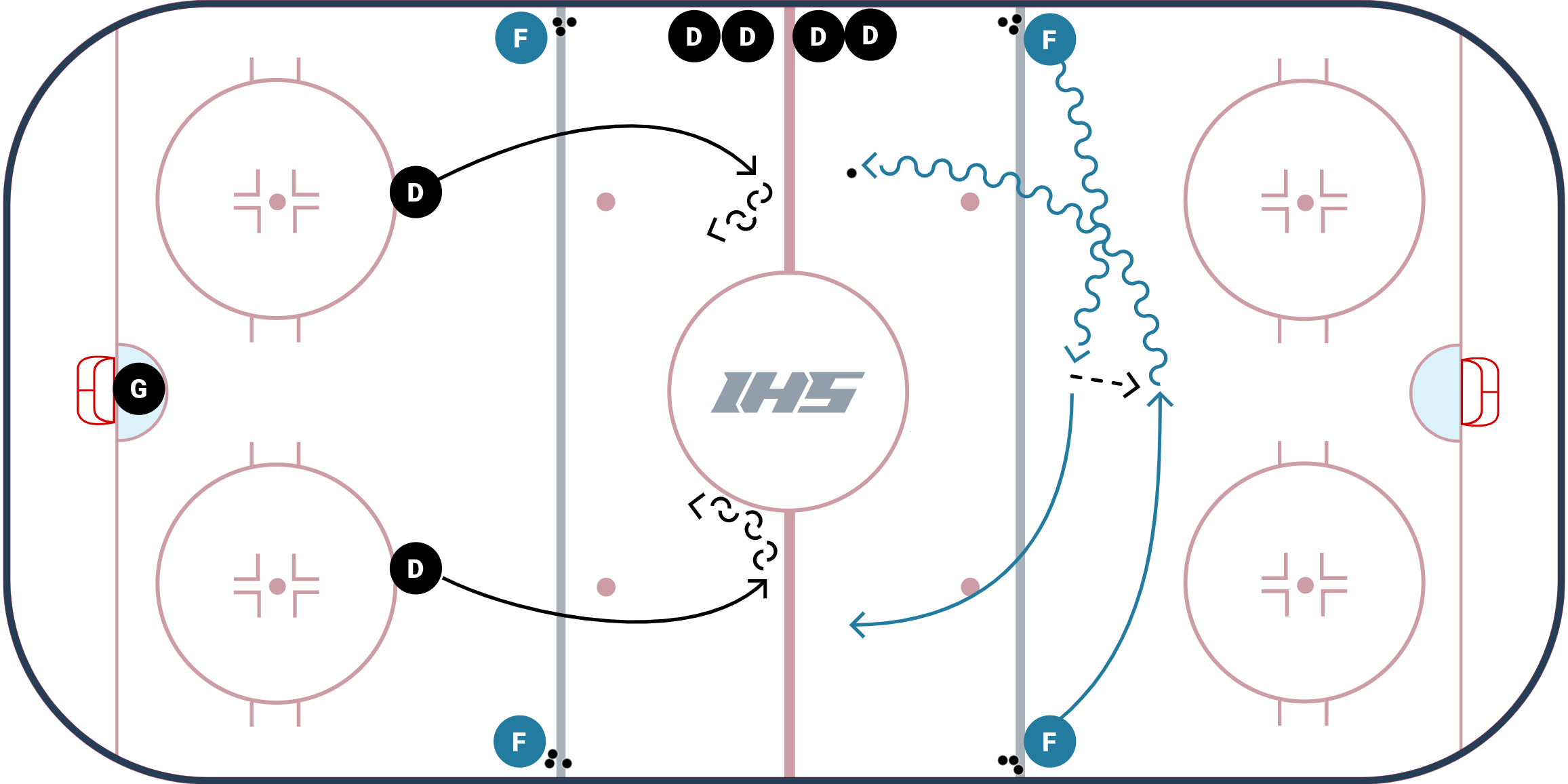
NZ Angle 1 v 1 - Trimble
Two lines at center ice circle with pucks.
On the whistle F1 leaves and skates without a puck and performs a Figure 8 around the neutral zone faceoff dots.
Once F1 reaches back to the red line, F2 will pass him a puck, thereby activating the 1 on 1 sequence.
- F1 will try to score and F2 will try and defend.
- Try to practice good body positioning and stick positioning as a defender.
- Offensively, try to protect the puck and bring it to the net in an attempt to score.
- Remember to finish plays, stop on the pucks and stop on the net.

